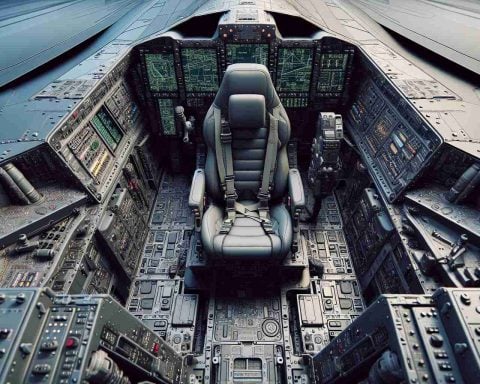Groundbreaking F-35 Data Breakthrough! UK and US Collaborate Like Never Before.
In a landmark achievement, Lockheed Martin has announced a successful trial involving the F-35 fighter jet and the UK Royal Air Force (RAF), showcasing the jet’s advanced capabilities in securely transmitting classified data.
During a real-time test, an F-35, soaring over Texas skies, transmitted sensitive information to a UK-based laboratory using a state-of-the-art system developed by Lockheed Martin. This data was efficiently processed by the UK’s Nexus C2 system, thereby proving the F-35’s capability to integrate seamlessly with international command and control systems.
This accomplishment marks a significant progression toward synchronizing military operations across various nations and technological platforms. The demonstration is seen as a pivotal move towards achieving a unified global battlespace environment.
UK’s Air Commodore Chris Melville highlighted the success of the transatlantic experiment. He emphasized the importance of collaboration between the UK and US industries for advancing innovation and capabilities in modern military operations. This trial underscores how effective partnerships can fast-track the development of cutting-edge solutions.
John Clark of Lockheed Martin Skunk Works echoed these sentiments. He pointed out that the exercise not only showed the F-35’s prowess in multi-domain operations but also strengthened international alliances. He stressed that such collaborations are vital for delivering swift advancements in a rapidly evolving global threat landscape.
In addition to its innovative efforts, Lockheed Martin’s Marietta facility continues to be an industrial powerhouse, supporting major aircraft like the C-130J Super Hercules and producing components for the F-35. As it strides into the future, the facility remains a cornerstone of military aviation innovation.
Exploring the Next Era of Military Aviation: The Future of F-35 Innovations and Collaborations
Pioneering Advances in Military Technology
Lockheed Martin’s recent collaboration with the UK Royal Air Force has demonstrated more than just new levels of data-sharing capabilities with the F-35 fighter jet. The exercise reveals a significant shift in how military technology is integrated and shared across national borders, paving the way for a new era in global defense cooperation.
Key Features and Innovations of the F-35 Program
The F-35 fighter jet is not only a testament to advanced engineering but also showcases cutting-edge technological capabilities that are redefining modern military operations. One of its standout features is the ability to secure and transmit classified data across continents, demonstrating the power of joint technological developments. This integration allows for seamless interaction with international command and control systems, enhancing multi-domain operational effectiveness.
Trend Towards Global Battlespace Environments
The successful trial conducted with the UK highlights a growing trend among international military forces towards creating a unified global battlespace. This approach enables real-time data sharing and coordinated responses to emerging global threats, making the F-35 a crucial component of this strategic military vision.
Pros and Cons of Advanced International Military Collaborations
– Pros:
– Enhanced global security through real-time data sharing.
– Strengthened international alliances.
– Accelerated development of innovative military solutions.
– Optimal use of technological resources across borders.
– Cons:
– Potential security risks in shared systems.
– Variability in technological standards between countries.
– Geopolitical challenges in technology-sharing agreements.
Predictions for Future Military Partnerships
Experts predict that successes like the recent F-35 trial will lead to an increase in international military collaborations, with more countries developing shared protocols for technology and data systems. This shift could revolutionize how military operations are conducted globally, allowing faster and more efficient responses to threats.
Lockheed Martin’s Role in Sustaining Military Excellence
At the heart of these developments, Lockheed Martin remains a pivotal figure in military aviation innovation. The Marietta facility continues its legacy by supporting key aircraft manufacturing and spearheading projects like the F-35, which contribute to reshaping military dynamics worldwide.
In summary, the groundbreaking data-sharing capabilities between the UK and US through the F-35 fighter jet signify a monumental step toward a more interconnected and strategic global defense environment. These innovations and partnerships are set to transform military operations and alliances for years to come.
For more about Lockheed Martin, visit Lockheed Martin.














